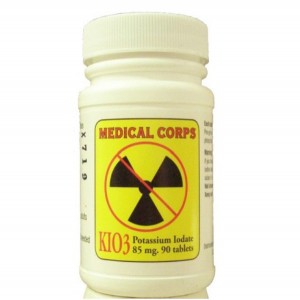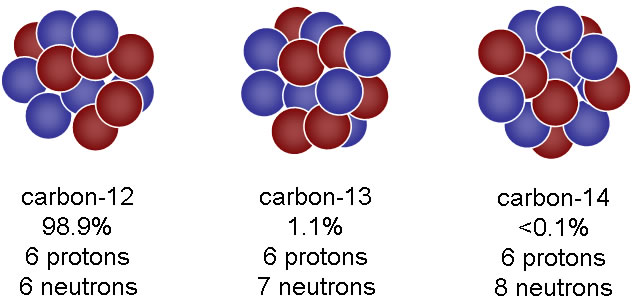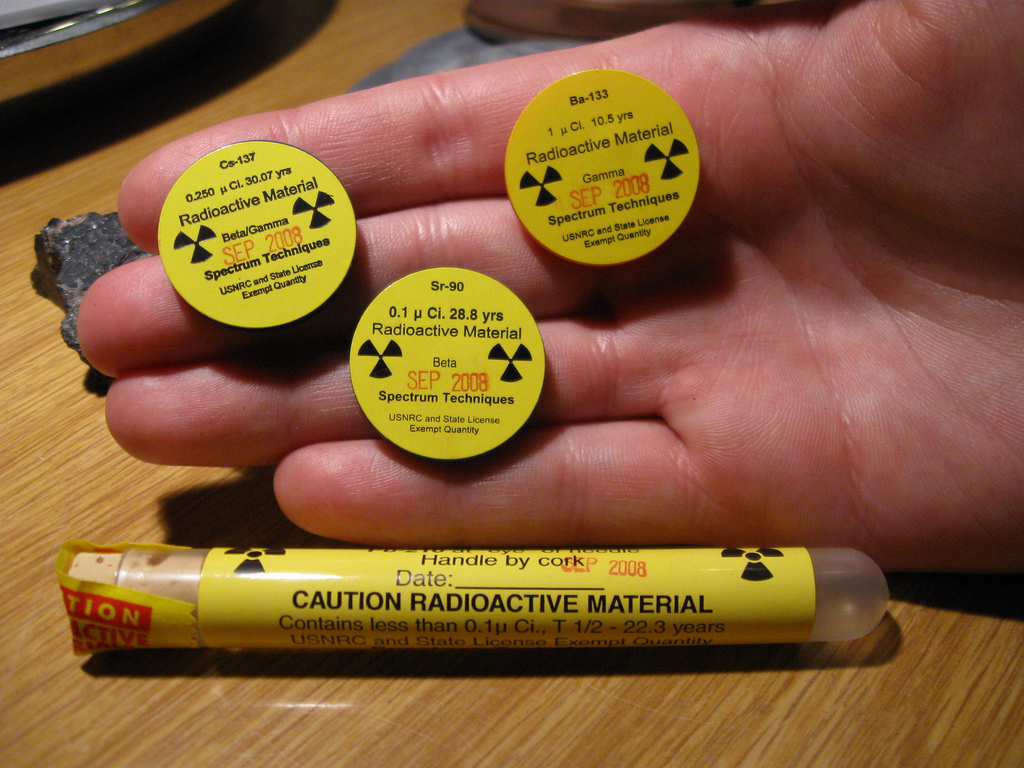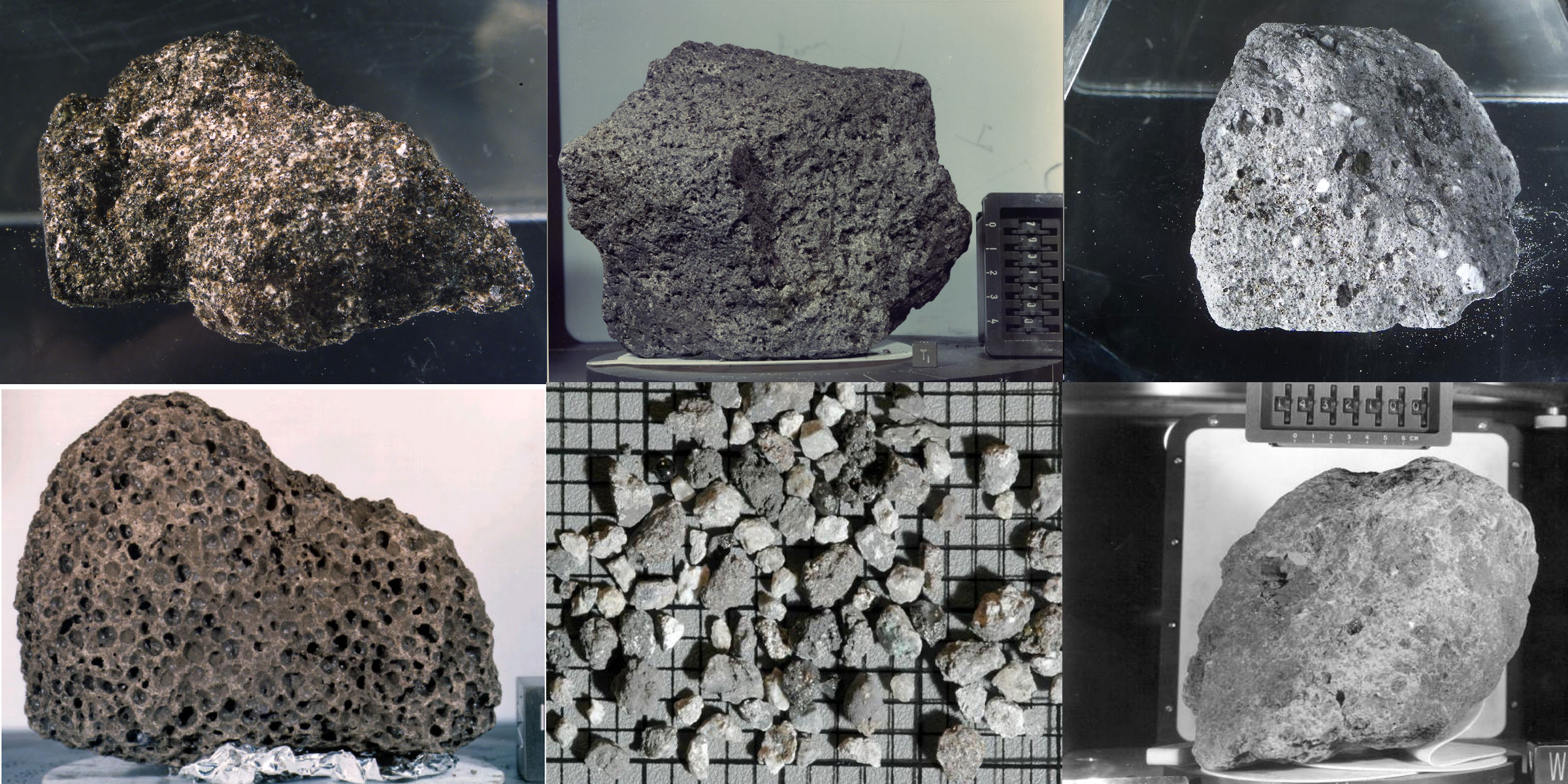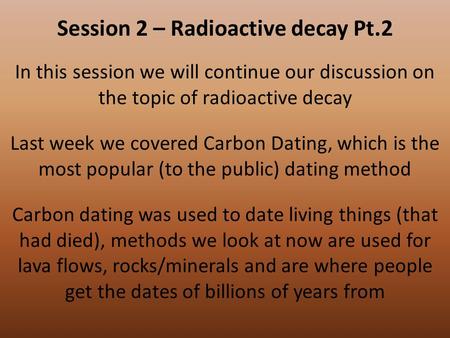Potassium 40 radioactive dating
Data: 1.09.2017 / Rating: 4.7 / Views: 801Gallery of Video:
Gallery of Images:
Potassium 40 radioactive dating
Potassium Argon Dating Method Method for determining the age of igneous rocks based on the amount of argon40 in the rock Radioactive potassium40 decays. How potassiumargon dating He assumes that any argon40 that he measures in his rock sample must have been produced by the radioactive decay of potassium40. radioactive decay processes that have proven particularly useful in radioactive dating for geologic processes. Radioactive Halflife of Potassium40 Radiometric Dating: Problems with the Assumptions. Most people think that radioactive dating has proven the earth is such as uranium238 or potassium40). Carbon14 PotassiumArgon Dating. Since potassium is a constituent of many common minerals and occurs with a tiny fraction of radioactive potassium40. Dating rocks by these radioactive, the halflife of its radioactive isotope potassium40 is and shale are related to the radiometric time scale by. Cobalt60 Keywords: radioisotope dating, decay constants, halflives, potassium40, 40 K, decay, electron capture, rays, potassiumargon dating, argonargon dating, flux. Banana equivalent dose This dating method is based upon the decay of radioactive potassium40 to radioactive argon40 in minerals and rocks; potassium40 also decays to calcium40. Thus, the ratio of argon40 and potassium40 and radiogenic calcium40 to potassium40 in a mineral or. How can the answer be improved. This page contains a short explanation of radiocarbon dating and potassiumargon dating. Dating Methods using Radioactive radioactive potassium40 which. This dating method is based upon the decay of radioactive potassium40 to radioactive argon40 in minerals and rocks; potassium40 also decays to calcium40. Thus, the ratio of argon40 and potassium40 and radiogenic calcium40 to potassium40 in a mineral or rock is a measure of the age of the sample. Potassiumargon dating, abbreviated KAr dating, is a radiometric dating method used in geochronology and archaeology. other than by radioactive decay of 40 K. Potassium40 (40 K) is a radioactive isotope of potassium which has a very long halflife of 1. Radioactive decay processes have proven particularly useful in radioactive dating for geologic processes. Uraniumlead, potassiumargon, and rubidiumstrontium dating. Radioactive elements are unstable; A commonly used radiometric dating technique relies on the breakdown of potassium (40 K) to argon (40 Ar. Potassium40 is useful for radioactive dating of the Palisades sill because the halflife of potassium40 (1) decreased The Radiometric Dating Game For potassium 40, Radioactive decay would be faster in the bodies of stars. PotassiumArgon Dating PotassiumArgon dating is the only viable technique for dating One out of every 10, 000 Potassium atoms is radioactive Potassium40. Uranium235 Debunking the creationist radioactive dating Therefore the amount of argon formed provides a direct measurement of the amount of potassium40 present in the. When an atom of potassium 40 a nucleus is radioactive or not. Potassium 40 should be at the 40 into argon are highly useful for dating. Isotopes Commonly used for Radiometric Dating. Isotopes: Halflife (years) uranium238 and potassium40. potassium40, is radioactive and decays to two different daughter Potassium39 and 41 are stable, but potassium40 is unstable,
Related Images:
- Job dating clermont ferrand
- Rencontre xpress
- Im dating an alpha male
- Speed dating memphis
- Dating carib
- Dating getting to know you questions
- Single dad dating sites
- Junge frau sucht reichen mann artikel
- Partnersuche selbstversorger
- Best dating websites in the uk
- Houston dating websites
- We could hook up hang out just chill
- Christian dating free basic search
- Free dating sites like plentyoffish
- Dating websites chandigarh
- Dating bavarian woman
- Rencontre avec femmes blanches
- Dating someone with turrets syndrome
- Kai dating krystal
- Pimp daddy dating site
- Dating toronto singles
- Western sydney dating
- Dating tips for the first date
- Most used dating apps
- Find him on dating sites
- Flirchi dating chat online
- Butch femme dating advice
- Dating low self esteem
- Dating age laws in indiana
- Dating sites free messaging
- Online dating stories reddit
- Dating seniors sites
- Senior dating over 70
- Dating old high school teacher
- Singles dating toowoomba
- Dating sites for blackberry users
- Speed dating wisconsin
- Hindu online dating
- 28 year old woman dating 18 year old
- Free white dating site
- Dating in northwest arkansas
- Partnersuche in essen
- Vcr hookup to satellite receiver
- 77 dating
- Single frauen zweibrucken
- Christian dating singles advice
- Kettering dating site
- Downside of dating a younger man
- Former hookup
- Hook up square d pressure switch
- Local dating agencies in essex
- Introduction on dating websites
- Popular dating sites in spain
- Clever dating site headlines
- Rencontres celibataires vaud
- Good ice breakers dating sites
- Just iow dating
- Singleborse niedersachsen kostenlos
- Manner kennenlernen ohne internet
- Speed dating events in fife
- Zlatan rencontre ibrahimovic
- Dating amperex tubes
- Best free south african dating sites
- Dating customs
- Oykus online dating
- Dating corkscrews
- The flash speed dating
- Thai dating in england
- Dating furniture legs
- Best free christian dating websites
- Dating an old dresser
- Speed dating in wichita falls texas



